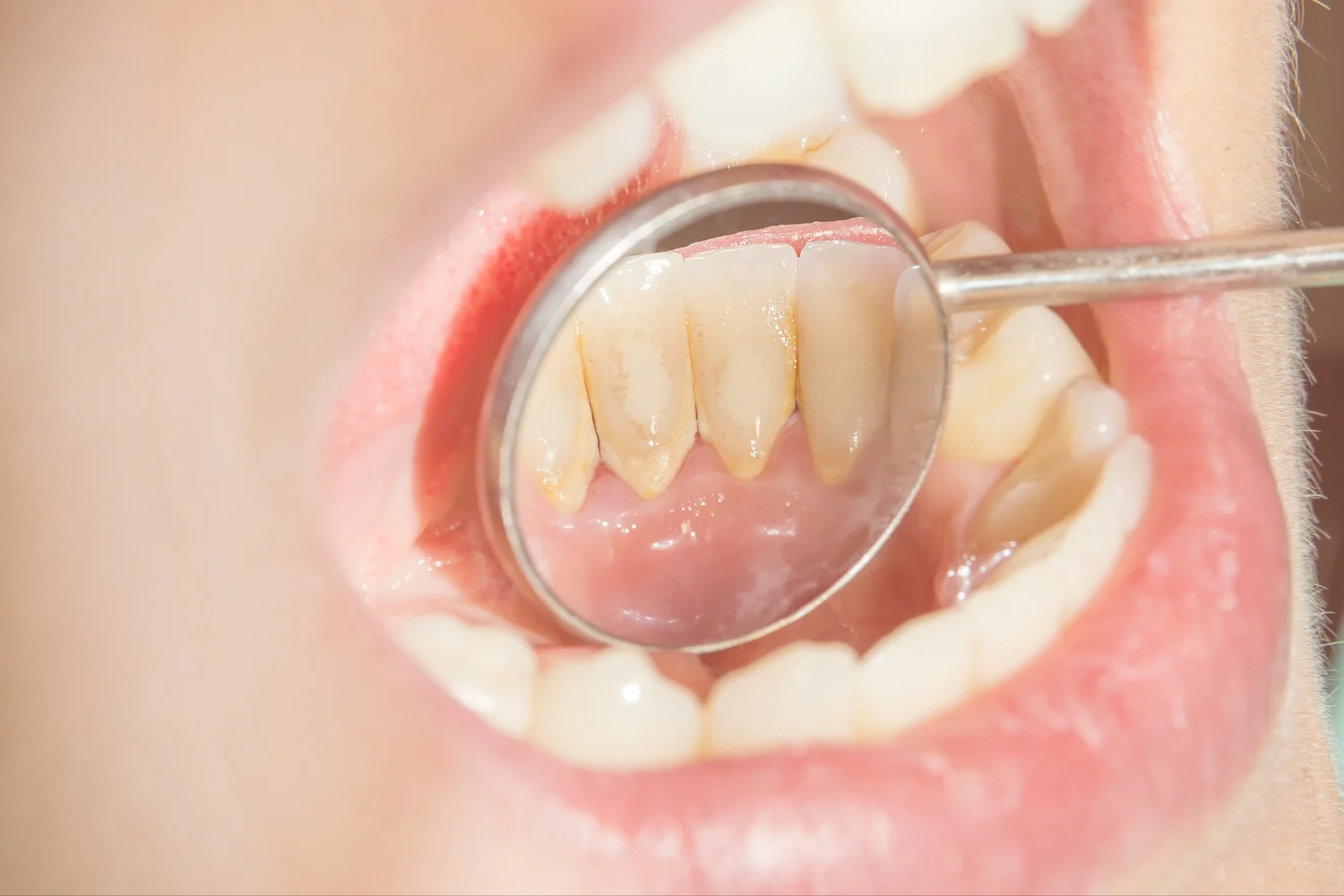
Newsletter Subscribe
Enter your email address below and subscribe to our newsletter

Enter your email address below and subscribe to our newsletter

Tartar on teeth: Learn about causes, prevention, and safe removal of dental calculus to maintain optimal oral health in our comprehensive guide
Ever wondered what tartar on teeth is?
A common but often misunderstood condition, also known as dental calculus, tartar is the hardened form of plaque that can cling to your teeth and gum line, leading to a variety of oral health issues if left unchecked.
Dental calculus is a hard, crusty deposit that forms on teeth and gum lines. It results from the mineralization of dental plaque, a sticky film composed of bacteria, food particles, and saliva.
When plaque is not removed through regular brushing and flossing, it can harden into tartar in as little as 24 to 72 hours.
Tartar is much more difficult to remove than plaque and requires professional dental cleaning.
Its presence can lead to gum disease and tooth decay because it provides a rough surface that encourages further plaque accumulation, exacerbating oral health problems.
Tartar is made of hardened plaque. Plaque itself consists of a variety of substances, including:
The symptoms of tartar on teeth can vary depending on the extent of the buildup and its impact on oral health. .
Key indicators include:
Mouth tartar, or dental calculus, is caused by the mineralization of dental plaque. Several factors contribute to its formation:
Several risk factors can increase the likelihood of tartar formation on teeth, making some individuals more prone to dental calculus than others.
Understanding these risk factors can help in preventing tartar buildup and maintaining oral health.
Key risk factors include:
Plaque and tartar are related but distinct components of dental health concerns, each contributing to oral hygiene issues in different ways.
Plaque:
Tartar:
In summary, while plaque is a soft, easily removable film that forms continuously, tartar is the hardened, more permanent result of neglected plaque.
Having tartar on your teeth can lead to several oral health complications, including gum disease (gingivitis and periodontitis), which can result in gum recession, bleeding, and infection.
Tartar buildup also increases the risk of tooth decay and cavities by providing a surface for bacteria to adhere to and produce harmful acids.
It can also contribute to bad breath and potentially lead to tooth loss if gum disease progresses untreated.
Tartar’s rough surface can further irritate the gums and exacerbate existing dental issues.
Dentists diagnose tartar through a combination of visual examination and dental instruments. During a check-up, the dentist or dental hygienist uses a small mirror to inspect all surfaces of the teeth and gums for signs of tartar, which appears as a hard, yellow or brownish deposit.
They may also use a dental explorer, a sharp tool, to gently probe the teeth and gum line, identifying areas where tartar has formed by feeling for rough surfaces that indicate calculus buildup.
In some cases, dental X-rays may be used to detect tartar below the gum line, where it’s not visible to the naked eye. This thorough examination helps determine the extent of tartar accumulation and guides the cleaning process.
Treating tartar involves professional dental procedures and good oral hygiene practices. Here’s how tartar is treated:
Preventing tartar from forming is key to avoiding extensive treatments. This involves:
Preventing tartar buildup involves maintaining a thorough oral hygiene routine and making lifestyle adjustments. Here are effective strategies to prevent tartar formation:
Yes, tartar can contribute to bad breath due to the bacteria it harbors. Tartar provides a rough surface that allows plaque and the bacteria within it to adhere more easily and accumulate. These bacteria can produce foul-smelling compounds as they metabolize food particles and release waste products. On top of that, as tartar builds up, it can lead to gum disease, which is another source of bad breath.
Tartar removal from teeth requires professional dental cleaning. Dentists or dental hygienists use special tools, such as scalers and ultrasonic devices, to gently scrape away tartar from above and below the gum line. This process, known as scaling, is the only effective way to remove tartar buildup.
If tartar is not removed, it can lead to gum disease, tooth decay, and bad breath. Over time, tartar buildup irritates and inflames the gums, causing gingivitis, which can progress to periodontitis, a more severe gum disease that can result in tooth loss. Tartar also provides a rough surface that harbors bacteria, increasing the risk of cavities.
Tartar on teeth does not go away on its own. Once plaque hardens into tartar, it can only be removed by a dental professional using special tools. Read more: Tartar Breaking Off Teeth
To remove tartar from a dental pick, follow these steps:
– Rinse and soak: Immediately after use, rinse the dental pick under warm water to remove any loose debris. Soak it in a disinfecting solution or mouthwash for a few minutes.
– Clean with soap: Use a small brush (an old toothbrush works well) and antibacterial soap to gently scrub the dental pick, focusing on the tip and any grooved areas where tartar may accumulate.
– Rinse thoroughly: Rinse the dental pick under warm water again to remove any soap residue.
– Disinfect: Soak the dental pick in rubbing alcohol for a few minutes to disinfect it, then rinse it again under warm water.
– Dry: Allow the dental pick to air dry completely before storing it to prevent bacterial growth.
Regularly inspect the dental pick for any signs of wear or damage. Replace it if necessary to ensure it’s safe and effective for use.
Fact Checked
Our dedicated team rigorously evaluates every article and guide to ensure the information is factual, up-to-date, and free of bias.
Updated Regularly
We update our articles and reviews regularly to ensure you have access to the latest data in the dental industry.
The content on Dental3DU’s blog is intended for educational purposes only. This information should not be relied upon as professional medical counsel. Be sure to always consult with your dentist about the dangers and benefits of any medication, treatment or procedure.
Dental articles in your inbox. Subscribe